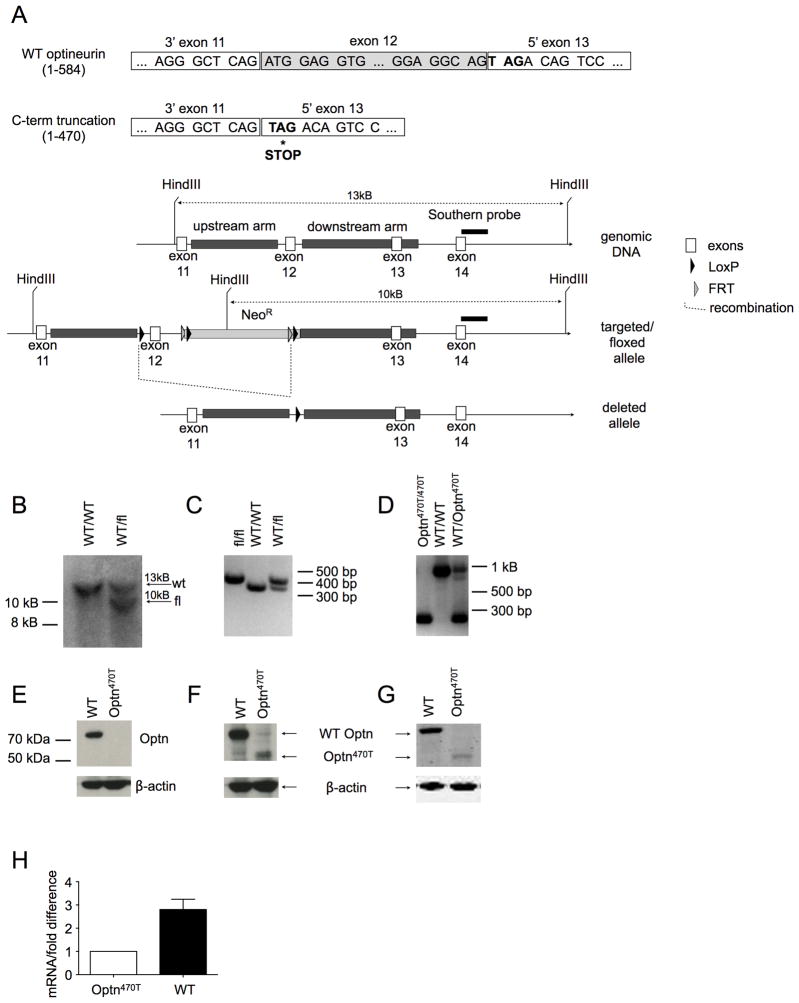Figure 2. Generation of Optn470T mice.
(A) To generate mice with C-terminal truncation of optineurin (Optn470T), a targeting construct with LoxP sites flanking exon 12 was inserted into the endogenous locus by homologous recombination. Upon Cre-mediated deletion, a stop codon was exposed at the beginning of exon 13, resulting in a truncated protein of 470 amino acids. Neo cassette, Southern probe, and recombination sites are indicated. (B) Southern blot distinguishing WT and chimeric mice (WT/fl) is shown. The introduced HindIII site in the Neo cassette leads to generation 10 kB band in the fl allele. The PCR of the indicated mice distinguishing WT and floxed (C) and WT and deleted alleles is shown (D). Blotting BMDM from the indicated mice with optineurin antibodies raised against C-terminal (E), central (F) and N-terminal epitopes (G). Optineurin mRNA was detected in BMDM by qRT-PCR, ΔCT of Optn470T was designated as 1, and the difference between ΔCT of WT and Optn470T is depicted as mean ± SEM for 3 independent experiments (H).

